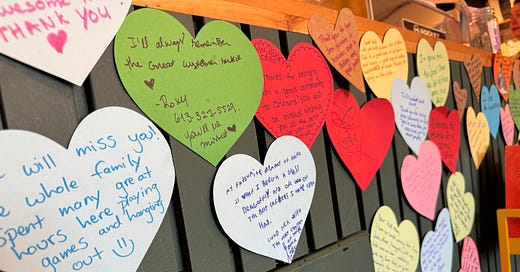Happy Friday everyone! And a special hello and thank you to my friend and subscriber, R, who inspired this week’s topic.
R reached out to ask a “Is this normal….” question. I love these! My answer, as it almost always is, was: “nope, not normal but common.”
In her case, an editor didn’t respond to her pitch. Then she happened to see him at an industry event where they chatted, she asked about her pitch, and he told her he’d follow up on it. You SO know where this is going, don’t you? She dutifully re-sent the pitch and…. Yep, you know it…. Crickets!
So is this normal? No. Let’s not normalize poor communication. But is it common and does it happen to me? ALL THE TIME! Editors are extremely busy and you never know what is happening behind the scenes at any given publication.
If this happened to me, would I pitch this editor again? Sure. I wouldn’t take their poor communication as a reflection on my pitching skills. But I’d also make note of this behavior because communication styles rarely radically change just because you land an assignment. Is the assignment financially worth the hassle? It depends. I want all my assignments to be high value in nature. That often means a high financial value but there are other contributing factors, like ease of communication. If it’s going to be sticky, that financial value better be way up there to balance things out.
This conversation with R reminded me of something I once heard an editor say at a conference years ago. They were asked how long it takes them to decide if they want a pitch. If it’s a yes, they know within a minute. If it’s a no, they know within two minutes. If it’s a maybe, they’ll never know. Interesting!
I don’t know if this applies to all editors but something about it resonates with me. When you know, you just know. Of course, there are all kinds of exceptions to this rule (some publications, for instance, discuss all pitches at a monthly staff meeting so responses are slow). But it begs the question of how do you move out of that “maybe” zone? I think the key lies in your routine pitch follow up. Haven’t heard back in a week or two? Send that short follow up email and tease a sentence or two that will help an editor make a decision. Maybe you could say something like “In my initial pitch, I shared that Farmer Bob will be one of my sources. I’m happy to report that I just had a tour of his farm and he gave me some great quotes about how climate change is affecting his strawberry crop”. If nothing else, you’re showing this editor that you’re a solid bet who does their research and if they don’t want this story, they’re primed to say yes for a future story.
But this isn’t really a story about how editors communicate or the parameters for getting a yes or no. This is about the power of having a tribe, of having people like R in your life, people you can send a message to and say “is this normal?”. I have a couple of these people in my writing life and they’re invaluable. We all need someone you can talk to, with no sense of competition or vagueness. You need truthful information. You need a second set of eyes. You need someone to tell you about rates or an editor’s vibe or the problems they had at a publication. These aren’t the kind of relationships you build overnight. I have one colleague, B, that I’ve been sharing sporadic back and forth emails for a few years. While we have a long history of honesty and helpfulness, we always start things off with “it’s totally okay if you’d rather not say”. It’s a give and take and it’s never an assumption.
So that is my advice for you this week. Who is in your industry information tribe? Is there anyone you can reach out to with a tip or lead? This field is only lonely if we let it.
A special shout out to my husband, Ryan, who has seen me suffer with seasonal allergies today and advocated for me to call this week’s newsletter “mucus moments”. Thanks to the power of Reactine, I am getting the last laugh!
And for all of you who get it, this is for you.













